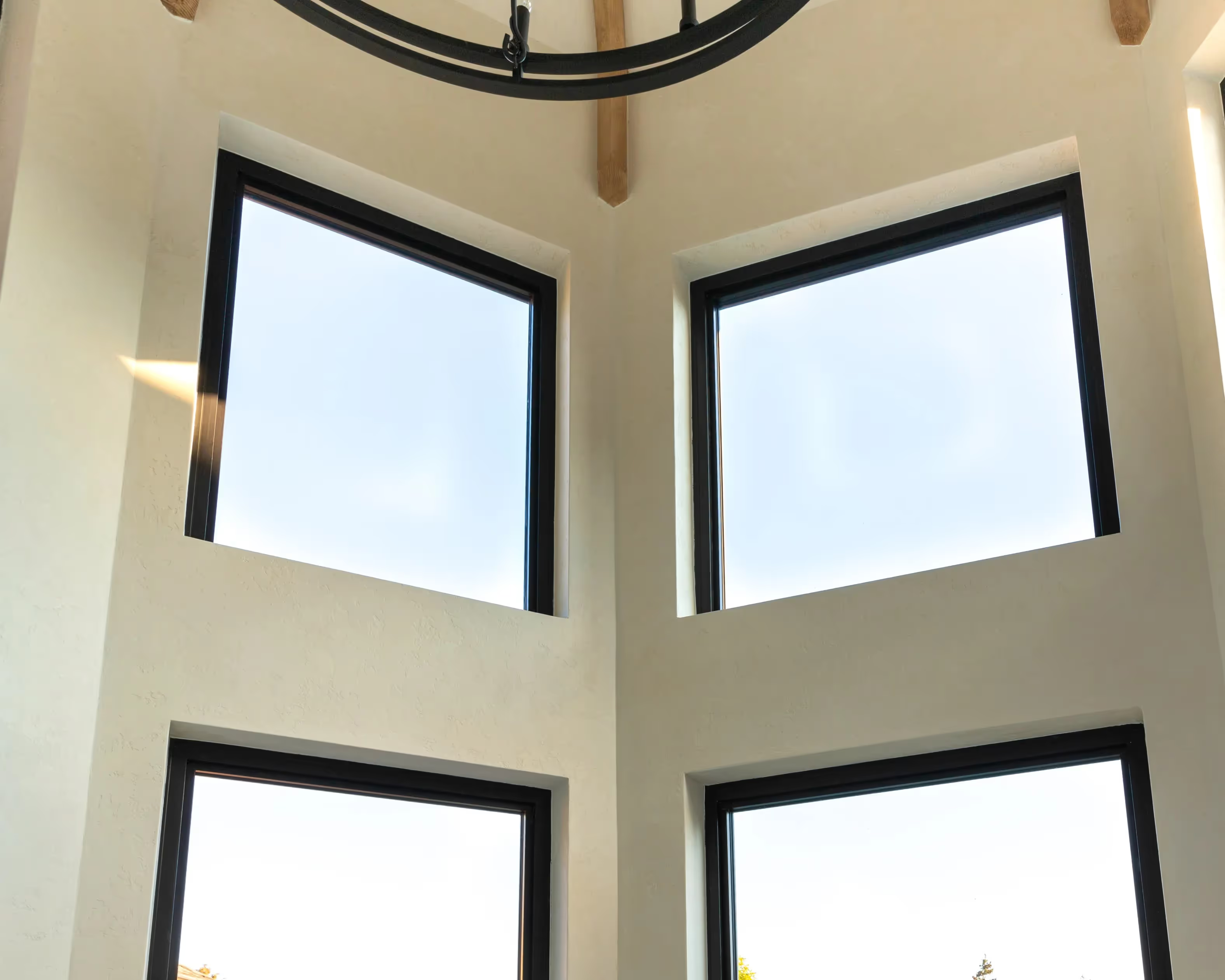Canadian climate is typically defined by extreme weather conditions throughout the year. From freezing temperatures in the winter to hot and humid weather in the summer, our windows are put to the test all year by the ups and downs of the country’s seasonal changes.As a barrier from the elements, storm windows are installed as an additional layer of protection. There are different types of storm windows and various recommendations to choose from depending on which province you live in. Ready to learn more? Let’s dive in.
What Is a Storm Window?
A storm window is an additional window that is installed in front of an existing one to provide more insulation. It also serves as an extra layer of protection from the elements, such as snow, wind, and rain, and can help lower heating and cooling costs by reducing drafts or leaks.Storm windows can be made of various materials, including glass, plastic, or aluminum, and are designed to fit snugly over the existing window.

4 Common Types of Storm Windows
The type of storm window you choose will depend entirely on your current window situation and budget. To help narrow down your choices, below are the types of storm windows that are best suited to Canadian climates:
1. Exterior Windows
Exterior storm windows are made from durable material and mounted on the outside frame of the window. When properly maintained, they’re good at keeping extreme weather elements out. So, make sure you buy from a reputable window manufacturer to ensure the quality and structural integrity of the window you’re buying.However, this window type is not perfect. A drainage hole must be left for moisture to prevent the frame from rotting. Hence, exterior storm windows cannot be made completely watertight.
2. Interior Windows
Interior storm windows are the easiest to install and remove, especially in apartment buildings and multi-storey homes. They are also great at preserving the exterior aesthetic of the window, particularly if you live in a heritage home or in an area where a classic aesthetic is a norm.In terms of energy savings, they are more energy-efficient than exterior storm windows because they form a much tighter seal with the glass.
3. Low-Budget Disposable Windows
These are window kits made of plastic or vinyl sheets, or films which can be placed over windows as a short-term, budget-friendly treatment option. However, they impede visibility and tend to degrade quickly due to sunlight exposure. As such, they require regular replacement (often every year) or even after a particularly harsh, stormy season.Buying from a reputable window manufacturer can actually help you save more in the long-run. as they can guarantee the quality of their vinyl windows with virtually no maintenance required.
4. Glass or Plastic Windows
Glass or plastic storm windows are for homes with bigger windows (and budgets). When it comes to storm window replacements, these are sturdier. Plus, the metal or vinyl frames are easily removed using built-in hook and groove systems. Many metal frames also use magnets to make sure they fit securely against the primary window. They offer higher degrees of insulation, while the glass provides unparalleled visibility and scratch resistance.If you’re buying any of the storm windows above, make sure they’re made with Low-E glass such as Pilkington Low-E Glass Technology. This specific type is designed to withstand harsh Canadian weather.

Storm Windows for Every Canadian Climate
The Pacific Northwest
Canada’s Pacific Northwest demands moisture-resistant window materials such as vinyl, wood-resin composite, and fibreglass. This is to combat its very cold winters and short, cooler summer months. Consider buying windows with high resistance to temperature transference, and look for U-values of 0.3 or lower in order to maximize insulation properties and energy savings.Summer is typically more temperate in this area, so look for windows with a higher solar heat gain coefficient. Avoid wood windows because they cannot withstand the elements of the Pacific Northwest. This is because wood storm windows are made from soft, fast-growing species such as pine, which offer very little in terms of rot resistance. Therefore, they are a risky choice in most humid and moist climates.
Eastern and Prairie Provinces
The East Coast is much better suited for wood windows because of the cool summer months and snowy and almost bitter, cold winters. Wood is one of the least thermally conductive materials on the market, and high-quality wood windows can last for decades with proper maintenance.Look for windows with U-values and SHGCs of 0.3 or lower—this means that your windows will have at least a double layer of glass which is separated by insulated glazing (i.e. a gas barrier), along with low-E coatings.You do not want to remove a historical hardwood unit and replace it with a new wood frame, as most experts agree that the craftsmanship of older hardwood windows is far superior to that of new hardwood frames.
Northern Canada
Triple-pane storm windows with low-E coatings, which help keep the heat inside your home, are often recommended in this climate.When selecting your windows, it's best to consider options with frames similar to what was stated in the point above (wood, vinyl, fibreglass, or composite materials). Combining wood frames with vinyl cladding is a great choice, as it provides good heat retention and protection for the wood. Both vinyl and fibreglass frames are also good options, however, fibreglass may be more costly compared to vinyl or wood frames.
How to Tell if a Storm Windows Is Suitable for Canadian Weather
The performance of all windows sold in Canada is regulated by the Canadian Standards Association’s section on windows (CSA A440). This standard dictates the types of materials which can be used in manufacturing as well as some of the minimum standards required of those materials in order to make them fit for sale to the Canadian public. These properties include thickness, hardness, and durability.CSA A440 also lays out the minimum performance standards for a wide variety of windows tested under standardized conditions. The characteristics are as follows:
- Watertightness*;
- Airtightness*;
- Wind load resistance*;
- Ease of operation;
- Resistance to forced entry;
- Condensation resistance; and
- Screen strength.
Any window sold in Canada is evaluated based on how it performs in the above categories of airtightness, water tightness, and wind load resistance. The other categories, those without an asterisk beside them, are voluntary and not part of the Canadian Standards Association’s evaluation.

Protect Your Home Year-Round With Storm Windows
When choosing a storm window, make sure to consider the technology involved in making it, its effect on the environment, as well as the design of each window type.At Clera Windows + Doors, you’ll only get the best of the best because we take care of everything from start to finish. Our windows are made with Pilkington Low-E Glass Technology, which is specifically made to withstand harsh Canadian climates. They are also made from durable vinyl, which guarantees your windows will be virtually maintenance-free.Another added benefit we offer is Stormguard Technology, which protects your windows against blowouts in harsh weather.If you need more assistance or information about our other products, call us today or leave a message to get a free estimate!








